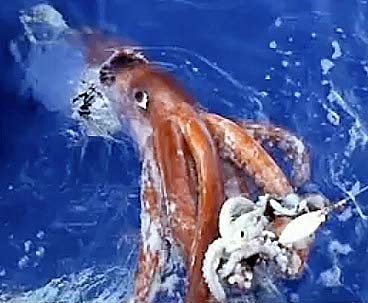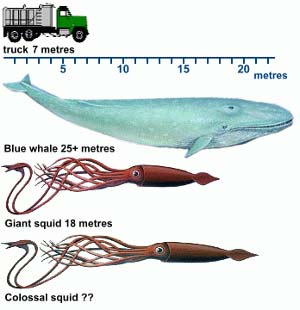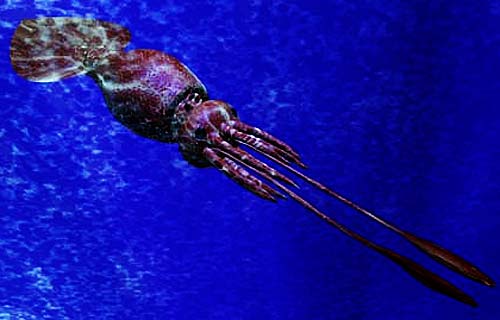Colossal Squid – Largest Invertebrate, Largest Eyes of All Animals

The largest animal in the world is the blue whale, but the largest invertebrate (a spineless creature) is the colossal squid, even bigger than its relative the giant squid. Scientists had a problem when they found the only known member of the genus Mesonychoteuthis – the colossal squid. The already mind-bendingly huge giant squid took the massive mollusk’s ideal name, and thus the even more ridiculous moniker “colossal squid” was bestowed upon what is almost certainly the world’s largest invertebrate (are there even bigger squid or octopus species hiding in the deep?). Topping out at an estimated 46 feet long, the colossal squid is different from the giant squid in a few key ways.
While giant squids inhabit most of the world’s oceans, the colossal squid is a bit more reclusive, keeping only to the very southernmost seas in the world, those that surround Antarctica. In fact, the range of the colossal squid is no further north than the southernmost tip of any of the other six continents. This squid is very rarely seen and full-grown adults have only been captured on film once so far and dead specimens have been collected only a few times. They don’t hang out where tourists can see them. The squid lives in the deepest, darkest, coldest waters in the world. In the Ross Sea near Antarctica is one of the few spots they have been seen.
Unlike the tentacles of the giant squid, which are lined with tiny teeth and suckers, the colossal squid’s “arms” are much more terrifying, covered with sharp hooks, some which swivel and others which have three points. These weaponized limbs are ideal for destroying prey and defending the animal. Their body is more rounded, and a great deal stouter, making the colossal squid considerably heavier than the giant squid. Proud owners of the largest eyes on earth, the colossal squid uses their big blinkers in the same way the giant squid does, to see better underwater in low or no-light conditions.

tentacles with hooks

lens of an eye
Before 1925, when the first evidence of the species was found as hooked tentacles were discovered in the stomach of a sperm whale, the stories of this creature were largely legend. The colossal squid and the giant squid have been the inspiration for sea-monster tales the world over for generations. Stories which might just come with a kernel of truth of the mighty Kraken who destroyed entire fleets, crushing ships and killing sailors the world over have traveled the earth for centuries. If you try to imagine such a monster of the deep, you might imagine something quite similar to the appearance of the colossal squid – the pale reddish skin, very long tentacles, the biggest eyes of any animal, 25 razor sharp swiveling hooks and a huge parrot-like beak. But these are the beaks that are often found in the bellies of sperm whales and some other whales, so we know that there are effective predators of the squid, at least they are able to prey on the younger ones.
Today, after a few actual specimens have been found and catalogued in the mid-2000s, we know more about the colossal squid, but continue to search for more answers to help us better understand the world’s oceans.

If the squid were to step on the scale one day this is what is thought it might measure:
- Eyes: 10 in (25 cm)
- Weight: 1000 lbs (454 kg)
- Full length: 50 ft (15 m)
- Body base or mantle: 9-13 ft (2.7-4 m)
- Tentacles: 18-36 ft (5.5 – 11 m)


